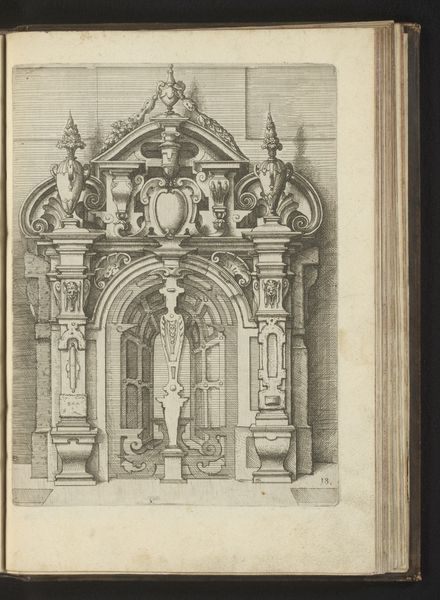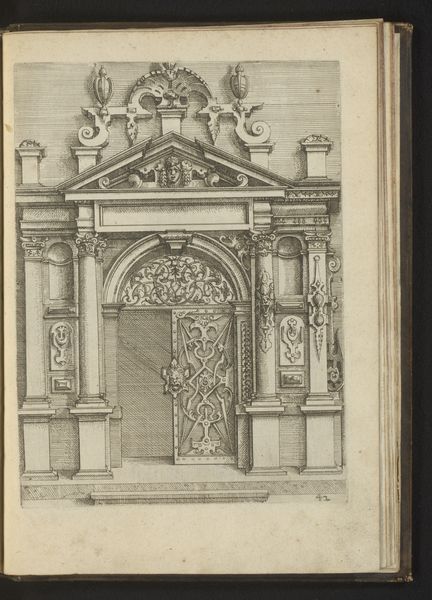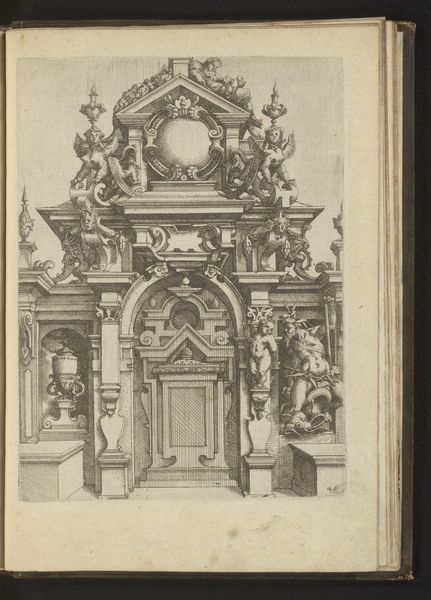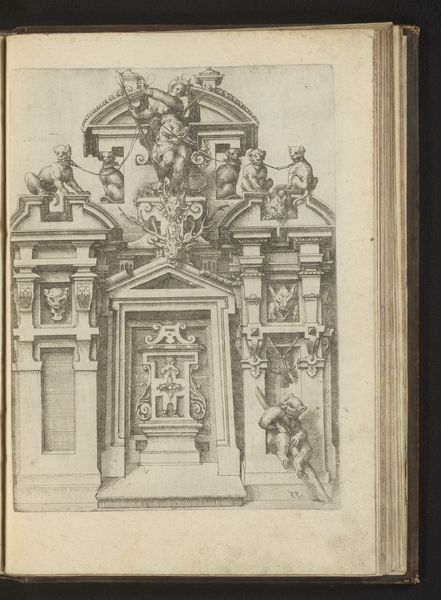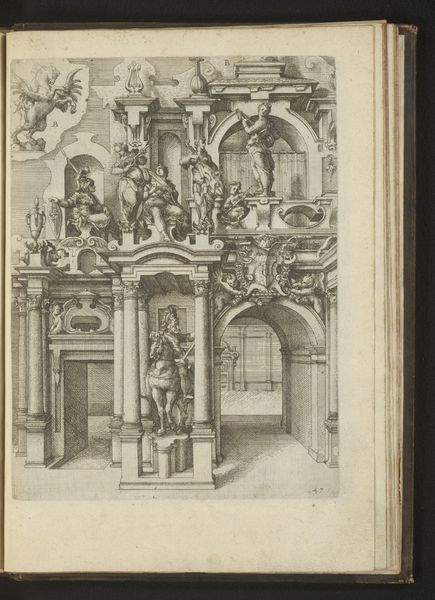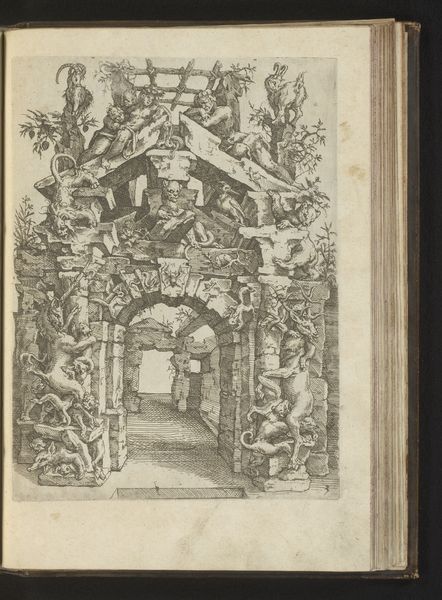
drawing, print, engraving, architecture
#
drawing
# print
#
form
#
11_renaissance
#
geometric
#
line
#
northern-renaissance
#
decorative-art
#
engraving
#
architecture
Dimensions: height 247 mm, width 208 mm
Copyright: Rijks Museum: Open Domain
Curator: This is "Portaal met verschillende ornamenten," an engraving by Wendel Dietterlin, dating from 1593 to 1595. Editor: Immediately striking. There’s a coldness to it, almost sterile, yet undeniably opulent. The precision and intricate details...it's mesmerizing, yet unsettling. Curator: Indeed. Let’s delve into the "how." Dietterlin, known for his architectural fantasies, utilized the engraving process to disseminate these complex designs widely. This print wouldn’t exist without specialized labor, workshops with apprentices honing skills in metalwork and printing. How do you see this engaging with the concept of luxury during the late Renaissance? Editor: In examining its societal context, it seems more aspirational than representational of actual lived space. The symmetry hints at the order prized during the Renaissance, but the exaggerated ornamentation teeters on the edge of excess, pointing towards the shifting dynamics between artistic expression, social control, and nascent individualism. It's saying, “look at the owner who would commission something like this”. Curator: And consider the labor embedded here. Not just Dietterlin’s artistic choices, but the highly skilled artisans who transferred his designs to the copper plate. Each line etched is a testament to physical effort, specialized knowledge, and the broader economic structure of artistic production at that moment in time. It collapses 'high' art and labor into one thing. Editor: Absolutely. Thinking about identity, too, this work participates in constructing ideas around patronage and display of power. For the rising merchant class, access to ornament and the consumption of decorative elements served to elevate their position within an otherwise rigid social hierarchy, by visually aligning them with aristocracy. Who can produce it? Who can pay for it? What spaces will display it? Curator: And by replicating and disseminating these images through print, Dietterlin helped to democratize design ideas, at least amongst those who had access to prints. Mass production influences everything in the process, up through the end user. Editor: I think you are right. There’s something inherently revolutionary in his rendering: a subversive element in popularizing these elaborate forms, contributing to a broader Renaissance dialogue concerning power, representation, and identity. Curator: Well, the image has prompted some excellent insights into craft, circulation, and the economies around artistic practice! Editor: I concur! Its layered dimensions allow us to draw rich and insightful conclusions about its time.
Comments
No comments
Be the first to comment and join the conversation on the ultimate creative platform.

